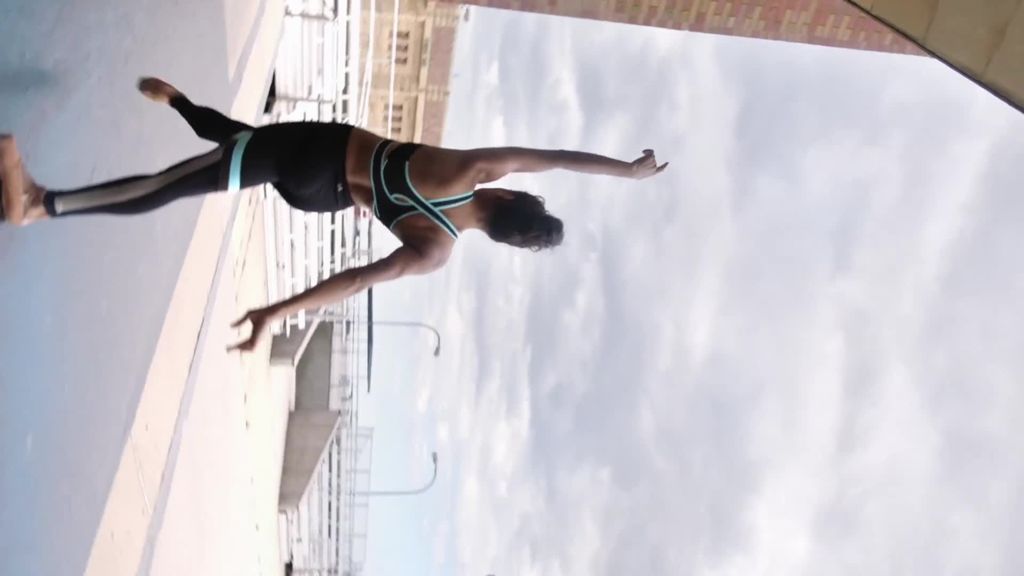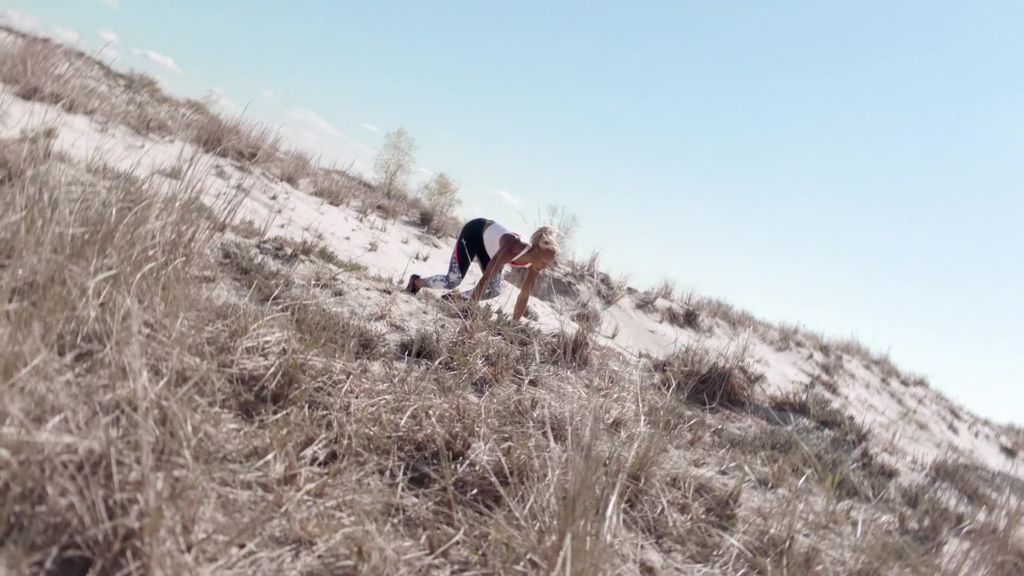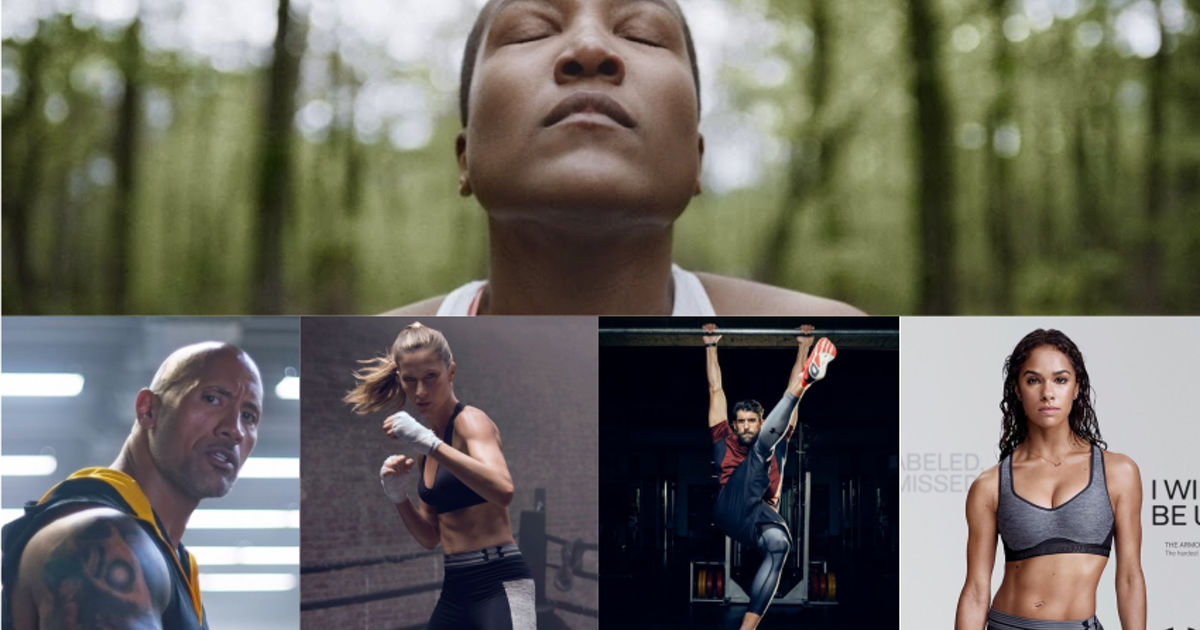Under Armour: Where there’s a will, there’s a way
Under Armour wasn't always the behemoth brand that is it today, but it got there through, among other things, thoughtful, insightful and impactful advertising. As our July Sports Special continues, Tim Cumming examines some of the work that Droga5 New York has created in partnership with UA, and how they've managed to knock it out of the park.
From $13K to $1billion in 10 years is a tightly focused upward trajectory, whichever way you measure it – and that’s the steep curve that Under Armour founder Kevin Plank guided his start-up through in the first decade of its existence.
Plank’s called Under Armour a “slogan-based company”, and there’s little doubt that crystal-clear sloganeering has gone a long way to raise and expand its profile globally.
Under Armour has grown from its origins in the loft of his gran’s house in Georgetown, Washington DC, where he sourced the cloth for his first t-shirts, to turning more than $5 billion in sales last year, with Plank moving in to Washington DC’s most expensive mansion complete with a replica of Hemingway’s bar at the Paris Ritz. He’s not there as much as he’d like. Too much focus on the business.
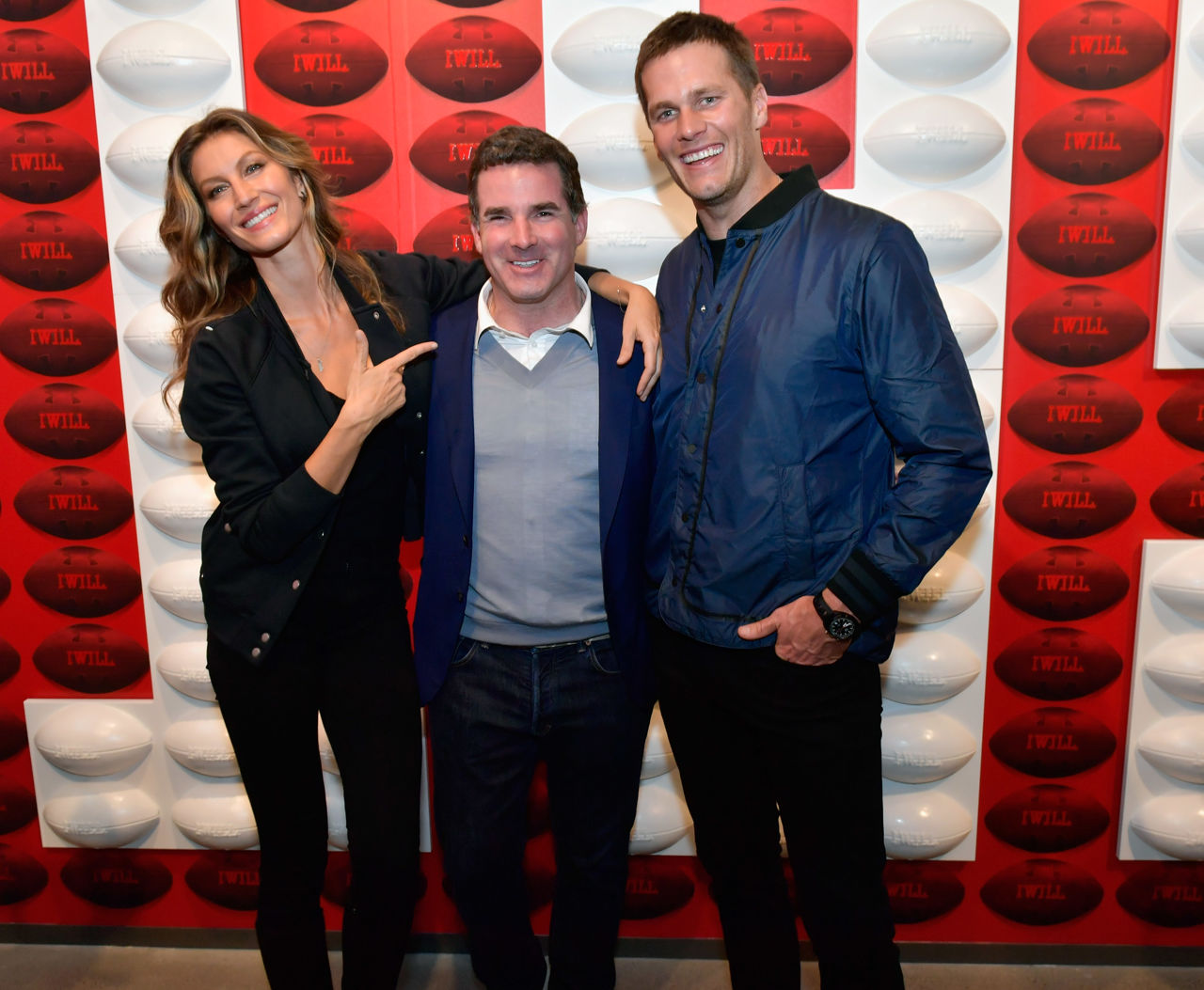
Above: Under Armour founder Kevin Plank, centre, with Gisele Bündchen and Tom Brady.
Commit to be fit
That sustained trajectory of expansion and success is not some fluke of luck, but the manifestation of total commitment and bending the world in which you work to the power of your will. In a good way – we’re not talking Triumph of the Will scenarios on Dr No’s island, but a commitment to one’s personal best, expressed in a sports apparel and equipment brand that built up its musculature through dedication, focus and a few motivating slogans.
From the off, the brand focus was on a severely undervalued commodity in sport – women.
“We want to deliver the most innovative and technical gear that delivers on our mission, which is to make all athletes better,” Plank told The Washington Post in 2014. He’s called Under Armour a “slogan-based company”, and there’s little doubt that crystal-clear sloganeering has gone a long way to raise and expand its profile globally. And that is down to the roster of award-laden films focusing on the power of the will, created since hooking up with New York’s Droga5 in 2013.
From the off, the brand focus was on a severely undervalued commodity in sport – women, who seemed to be regarded as a second-tier subjects and consumers. In the wake of #metoo and the steep rise in popularity of women’s soccer during this year's World Cup and England’s brave lionesses, this seems extraordinary. But the times are rapidly changing, and Droga5 was ahead of the curve, its creatives working away at the heart of tight-focused brand messages that set out to address the empowerment of women without the usual condescending clichés that inspire not so much change as chucking up a gluten-free mess all over your running shoes.
Credits
powered by
- Agency Droga5/New York
- Production Company SMUGGLER
- Director Jaron Albertin
-
-
Unlock full credits and more with a Source + shots membership.
Credits
powered by
- Agency Droga5/New York
- Production Company SMUGGLER
- Director Jaron Albertin
- Chief Cr Off Ted Royer
- CD John McKelvey
- CD Hannes Ciatti
- Copywriter Felix Richter
- Exec Producer Matt Nowak
- HP Ben Davies
- Art Director Alexander Nowak
- DP Andrij Parekh
- Exec Producer Allison Kunzman
- Editor Ben Jordan
- Head of Production Sean Costelloe
- Exec Producer Erica Thompson
- Producer Alex Fitzgerald
- Colorist Fergus McCall
- Sound Design Heard City
- Talent Gisele Bundchen
- Producer Andy Coverdale
- Producer Sari Resnick
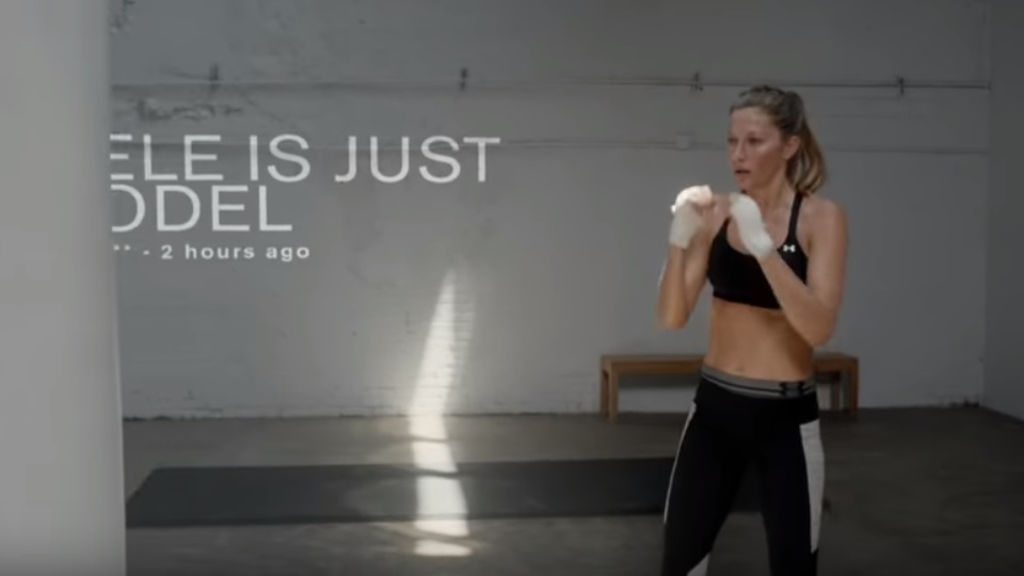
Credits
powered by
- Agency Droga5/New York
- Production Company SMUGGLER
- Director Jaron Albertin
- Chief Cr Off Ted Royer
- CD John McKelvey
- CD Hannes Ciatti
- Copywriter Felix Richter
- Exec Producer Matt Nowak
- HP Ben Davies
- Art Director Alexander Nowak
- DP Andrij Parekh
- Exec Producer Allison Kunzman
- Editor Ben Jordan
- Head of Production Sean Costelloe
- Exec Producer Erica Thompson
- Producer Alex Fitzgerald
- Colorist Fergus McCall
- Sound Design Heard City
- Talent Gisele Bundchen
- Producer Andy Coverdale
- Producer Sari Resnick
Above: Gisele Bündchen stars in Under Armour's I Will What I Want
No pinking; no shrinking
Harry Roman-Torres, Head of Strategy at Droga5 started work on the brand more or less as soon as it entered the building. “There was this phrase, ‘to pink it or shrink it’” he remembers, “a reference to colour palettes being more feminine, and taking existing men’s lines and shrinking them to fit women’s bodies. And women were looking at that, and going ‘no thank you!’.”
Indeed – out of UA’s $3billion turnover in 2013, less than half a million was being spent by women. “We needed to figure out a way of how to take the brand’s idea of willpower and translate that into something that made sense for women,” says Roman-Torres, “and I Will What I Want was the first big-hitting campaign.
The point of entry was supermodel Gisele Bündchen kicking back against her social media detractors in a dynamic, single-shot training video.
Its two spots directed UA away from the familiar odours of male testosterone and into the depths of a barely-tapped female audience. The point of entry was supermodel Gisele Bündchen kicking back against her social media detractors in a dynamic, single-shot training video. In a second spot, ballerina Misty Copeland – the first African-American woman to become principal dancer in the American Ballet Theatre’s 75-year history – recalls being told that she “didn’t have the right body type or skin colour” for ballet.
I Will What I Want distilled and amplified their stories to maximum effect and won Droga5 two gold Lions and a Cyber Grand Prix at Cannes, and it set the tone and standard for future UA/Droga5 collaborations.
Credits
powered by
- Agency Droga5
-
- Director The Malloys
-
-
Unlock full credits and more with a Source + shots membership.
Credits
powered by
- Agency Droga5
- Director The Malloys
- Editing Company Cartel
- Editor Leo Scott
- Executive Producer Roger Zorovich
- Managing Director Rebecca Skinner
- Managing Director Michelle Ross
- Producer William Green
- Director of Photography Jody Lee Lipes
- Music Mike Ladman
- Agency Producer Taylor Donaldson
- Agency Producer Nathan Pardee
- Agency Producer Carole McCarty
- Head of Production Kyle Wright
- Art Director Patrick Horton
- Art Director Sam McCluskey
- Copywriter Stephen Shocket
- Copywriter Becca Pottinger
- Creative Director Ray Smiling
- [group] Creative Director Brandon Pierce
- Executive Creative Director Felix Richter
- Creative Chairman David Droga
- Director of Art Production Cliff Lewis
- Co-Director of Film Production Jesse Brihn
- Co-Director of Film Production Jesse Brihn

Credits
powered by
- Agency Droga5
- Director The Malloys
- Editing Company Cartel
- Editor Leo Scott
- Executive Producer Roger Zorovich
- Managing Director Rebecca Skinner
- Managing Director Michelle Ross
- Producer William Green
- Director of Photography Jody Lee Lipes
- Music Mike Ladman
- Agency Producer Taylor Donaldson
- Agency Producer Nathan Pardee
- Agency Producer Carole McCarty
- Head of Production Kyle Wright
- Art Director Patrick Horton
- Art Director Sam McCluskey
- Copywriter Stephen Shocket
- Copywriter Becca Pottinger
- Creative Director Ray Smiling
- [group] Creative Director Brandon Pierce
- Executive Creative Director Felix Richter
- Creative Chairman David Droga
- Director of Art Production Cliff Lewis
- Co-Director of Film Production Jesse Brihn
- Co-Director of Film Production Jesse Brihn
Above: Dwayne 'The Rock' Johnson stars in this campaign from 2018.
Where there's willpower there's a way
“Back then,” says Roman-Torres, “there was a climate where it felt like it had become impossible for women in general to be ‘right’ by everyone’s standard – there was this whole debate: should you be a mother? a business person? is it okay to be both at once? We combined that with Under Armour’s brand spirit of willpower.
If you exercise willpower in an athletic way you don’t need anyone’s permission, so that’s how we got to I Will What I Want. ‘I use my willpower to live life on my own terms. I don’t need to subscribe to anyone’s philosophy, modern or traditional, and live life on their terms.’ That was how we wanted to define Under Armour women.”
We decided to juxtapose that lazy, easy form of communication [social media] with someone who was really exerting themselves, and who exhibits willpower.
What was significant was that they were hero women who weren’t traditional athletes. “In both executions we leaned into this tension of what people expect to do and what you really do through your will power,” says Roman-Torres.
Under Armour – Unlike Any
Under Armour – Jessie Graff
Under Armour – Alison Desir
Under Armour – Misty Copeland
Under Armour – Natasha Hastings
Above: The Unlike Any campaign.
Executive Creative Director at Droga5, Felix Richter, was one of the chief architects of the Bundchen spot, and the UA campaign. “We found this crazy fact online that on any given day there were hundreds of comments on what Gisele was doing, across social media and the internet,” he says. “The internet’s anonymous nature means that there are so many throwaway comments, people just blurting stuff out there. So we decided to juxtapose that lazy, easy form of communication with someone who was really exerting themselves, and who exhibits willpower.”
What we were drawing on was to look at the unexpected side of the athlete. The vulnerability, the rawness, and in terms of the mood of the film, that was pretty good guidance.
I Will What I Want set a bold pace, one that’s been matched by equally attention-grabbing spots, including 2017’s Unlike Any, matching female athletes paired with diverse range of poets, spoken word and rap artists; 2018’s nest of short, sharp films starring boxer Anthony Joshua, among others, Will Makes Us Family; and 2019’s long-form celebration of training and pushing your limits, Margin of Victory, for which director Gotham Chopra drew out the athlete’s peaks and most vulnerable moments “with the hope of inspiring everyone out there to pursue their own dreams”.
In each one, the hero is not an all-conquering, impossibly remote world-number-one athlete, but someone relatable to you, sweating out their training regime in Under Armour apparel, just like you do as you strain to hit your own ‘hero’ level of performance.
Credits
powered by
- Agency Droga5/New York
- Production Company PRETTYBIRD
-
-
-
Unlock full credits and more with a Source + shots membership.
Credits
powered by
- Agency Droga5/New York
- Production Company PRETTYBIRD
- Shooting Boards Famous Frames
- Executive Producer Sasha Hirschfeld
- Senior Producer Gwynne Evans Reid
- Post Production Method Studios/New York
- Senior Flame Artist Tom McCullough
- Color Producer Alexandra Lubrano
- Audio Mixer/Sound Designer Jeremy Siegel
- Executive Producer Jackie James
- Color Company 3/New York
- Editing Exile Editorial
- Sound Design Heard City
- Post Production Method Studios/New York
- Line Producer Dennis Beier
- Executive Producer Angela Lupo
- Flame Artist Chris Hunt
- Flame Artist Kevin Quinlan
- Head of Production Tracy Hauser
- Executive Producer Suzanne Hargrove
- Colorist Sofie Borup
- Colorist Kath Raisch
- Producer Dennis Beier
- DP Michael Ragen
- DP Evan Prosofsky
- Editor Max Koepke
- Art Director Patrick Horton
- Associate Producer Taylor Donaldson
- Chief Creation Officer Sally-Ann Dale
- Chief Creative Officer Neil Heymann
- Co-Head of Broadcast Production (HP) Jesse Brihn
- Copywriter Stephen Shocket
- Creative Chairman David Droga
- Creative Director Ray Smiling
- Design Director Nate Moore
- Executive Creative Director Tim Gordon
- Executive Creative Director Tim Parkinson
- Executive Producer Kyle Wright
- Executive Producer Carole McCarty
- Music Supervisor Mike Ladman
- Producer Nathan Pardee
- Senior Designer Jaymes Barone
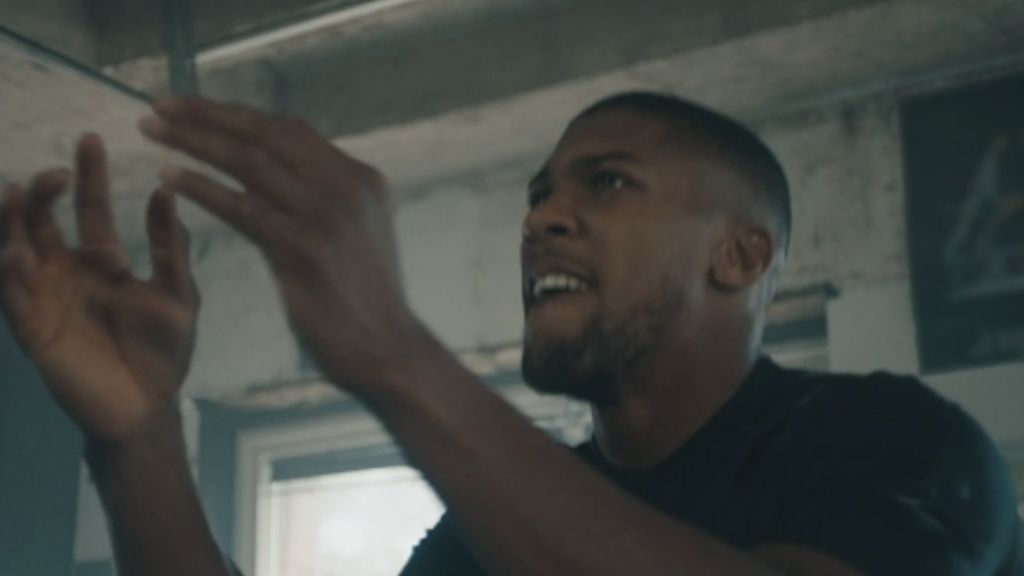
Credits
powered by
- Agency Droga5/New York
- Production Company PRETTYBIRD
- Shooting Boards Famous Frames
- Executive Producer Sasha Hirschfeld
- Senior Producer Gwynne Evans Reid
- Post Production Method Studios/New York
- Senior Flame Artist Tom McCullough
- Color Producer Alexandra Lubrano
- Audio Mixer/Sound Designer Jeremy Siegel
- Executive Producer Jackie James
- Color Company 3/New York
- Editing Exile Editorial
- Sound Design Heard City
- Post Production Method Studios/New York
- Line Producer Dennis Beier
- Executive Producer Angela Lupo
- Flame Artist Chris Hunt
- Flame Artist Kevin Quinlan
- Head of Production Tracy Hauser
- Executive Producer Suzanne Hargrove
- Colorist Sofie Borup
- Colorist Kath Raisch
- Producer Dennis Beier
- DP Michael Ragen
- DP Evan Prosofsky
- Editor Max Koepke
- Art Director Patrick Horton
- Associate Producer Taylor Donaldson
- Chief Creation Officer Sally-Ann Dale
- Chief Creative Officer Neil Heymann
- Co-Head of Broadcast Production (HP) Jesse Brihn
- Copywriter Stephen Shocket
- Creative Chairman David Droga
- Creative Director Ray Smiling
- Design Director Nate Moore
- Executive Creative Director Tim Gordon
- Executive Creative Director Tim Parkinson
- Executive Producer Kyle Wright
- Executive Producer Carole McCarty
- Music Supervisor Mike Ladman
- Producer Nathan Pardee
- Senior Designer Jaymes Barone
Above: Anthony Joshua in Will Makes Us Family.
Making a Burden an inspiration
“David [Droga] said a lot to us about how we approach the storytelling is not about heroes and hero worship and the exalting of athletic heroism,” says Roman-Torres. “We always try to show something that you don’t know, or haven’t been privy to. If you look at the Gisele spot, the backdrop of it is the toxicity and lack of accountability that happens in social media, but the real magic of it is showing you that she is also just a human being.”
In terms of execution, the inspiration for I Will What I Want and its successors was 1970s LA performance artist Chris Burden’s Through the Night Softly, in which he crawls, naked, over broken glass. “What we were drawing on was to look at the unexpected side of the athlete,” says Roman-Torres. “The vulnerability, the rawness, and in terms of the mood of the film, that was pretty good guidance.”
Rawness of a different kind marked out the Unlike Any campaign pairing contemporary spoken word with five female athletes, including slam poet Saul Williams with ballerina Misty Copeland, National Poetry Series winner Dominique Christina with sprinter Natasha Hastings, and Taekwondo champ Zoe Zhang with Taiwanese rapper Aristophanes.
We gave them a lot of freedom. We were very careful not to dictate... and it was great that UA gave them the freedom to make something really authentic but crafted.
The words came first, before being sent to director Georgia Hudson, whose previous work had been in music video. “We went through long lists of people from all possible genres,” says Richter of the poets’ selection process. “Then we looked at their story, looking for familiarities. They were given really detailed briefs, with quotes from the athletes, biographies and bullet points of what would be good to mention, and that was it.
We gave them a lot of freedom – it was important that the poets were really able to do it their way. We were very careful not to dictate, and everyone involved was really amazing to work with. And it was great that UA gave them the freedom to make something really authentic but crafted.”
United by sweat
Authenticity is key here, right across the branding. The music behind the action may range from trap beats and heavy bass to enduring, empowering classics like You Can Make It If You Try, but the soundtrack to each campaign is steadily, unremittingly punctuated by a choreography of grunts, groans, exhalations, the sounds of hard, direct impact. It’s the nitty-gritty we all share, whether we’re up with the front runners or among the stragglers trailing behind but still pushing ourselves to the limit.
Not everyone trains the same but we’re all united by sweat, and no matter how you train we’re all in it together.
“It’s all about the fact that will power is what unites you,” says Richter. “Whether you’re a young athlete, a world-class athlete, or a trainer. And it’s all about the level of detail that Under Armour looks for in the work. It has to be real to be believable. The eye has its own ability to sort out what is bullshit or not – and this is a brand that really worships at the altar of authenticity.”
Credits
powered by
- Agency Droga5/New York
- Production Company Epoch Films
- Director Martin De Thurah
-
-
Unlock full credits and more with a Source + shots membership.
Credits
powered by
- Agency Droga5/New York
- Production Company Epoch Films
- Director Martin De Thurah
- Chief Cr Off Ted Royer
- Group CD Tim Gordon
- CD Alexander Nowak
- AD/Writer Toby Treyer-Evans
- AD/Writer Laurie Howell
- HP Ben Davies
- Exec Producer Adam Perloff
- CD Felix Richter
- Creative Chairman/Exec CD David Droga
- Chief Creation Officer Sally-Ann Dale
- HP Interactive Niklas Lindstrom
- Production Designer Elliott Hostetter
- Editor Leo Scott
- DP Kasper Tuxen
- Exec Producer Melissa Culligan
- Post Production Charlotte Arnold
- Sound Design String and Tins
- Sound Design Q Department
- Audio Mixer Chris Afzal
- Producer Michaela Johnson
- Song "The Last Goodbye" The Kills
- Talent Michael Phelps
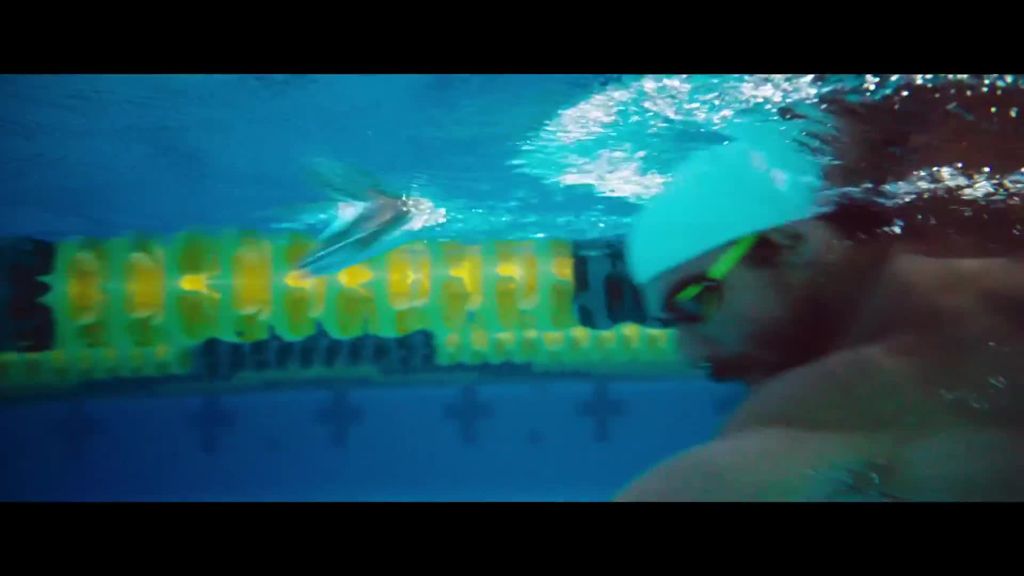
Credits
powered by
- Agency Droga5/New York
- Production Company Epoch Films
- Director Martin De Thurah
- Chief Cr Off Ted Royer
- Group CD Tim Gordon
- CD Alexander Nowak
- AD/Writer Toby Treyer-Evans
- AD/Writer Laurie Howell
- HP Ben Davies
- Exec Producer Adam Perloff
- CD Felix Richter
- Creative Chairman/Exec CD David Droga
- Chief Creation Officer Sally-Ann Dale
- HP Interactive Niklas Lindstrom
- Production Designer Elliott Hostetter
- Editor Leo Scott
- DP Kasper Tuxen
- Exec Producer Melissa Culligan
- Post Production Charlotte Arnold
- Sound Design String and Tins
- Sound Design Q Department
- Audio Mixer Chris Afzal
- Producer Michaela Johnson
- Song "The Last Goodbye" The Kills
- Talent Michael Phelps
Above: Droga5's Cannes Film Craft Grand Prix-winning spot starring Michael Phelps.
As Under Armour’s SVP of Global Brand Management, Attica Jacque, concludes: “Its innovative products are aimed not just at elite athletes, but towards all people striving to meet their fitness and life goals. A lot of Under Armour’s advertising is based on the idea of the performance and the training. Not everyone trains the same but we’re all united by sweat, and no matter how you train we’re all in it together.”
)

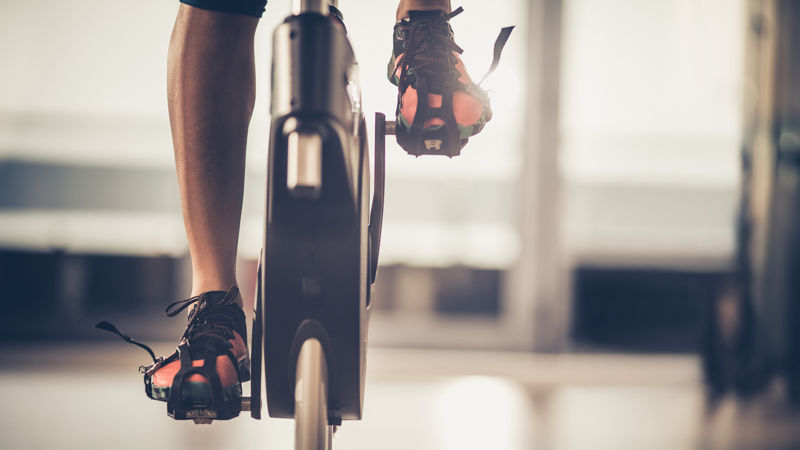


 + membership
+ membership








